biology
Latest
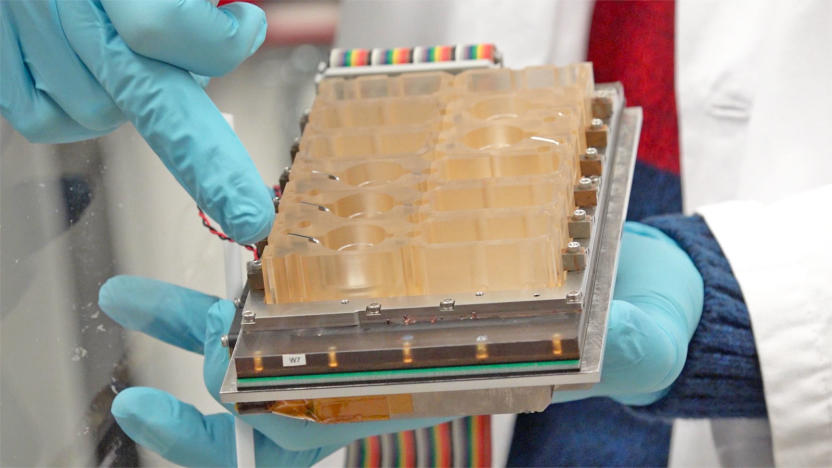
Scientists recreate the female menstrual cycle on a chip
Scientists don't understand as much as they'd like about the female reproductive system, both due to their historical exclusion from studies and the challenge in replicating the complexities of that anatomy. At last, however, there's progress. Researchers have developed an organ on a chip that models a woman's entire reproductive system, including menstruation and hormone-induced responses. It clearly doesn't look like the real thing (see above), but numerous key behaviors are present.

ICYMI: Roving robots measure health vitals
Today on In Case You Missed It: Belgian company BeWell has created an automated roving kiosk that assists doctors and nurses in admitting and testing patients. The robot kiosk, called the Wellpoint system, can measure a patients weight, pulse and pulse oximetry four minutes faster than a human can -- and it will automatically update digital medical records once the tests have been performed. It can also guide patients through standard intake questions via a touchscreen interface, to help make admissions go faster. BeWell is looking into the possibilities of also connecting blood sugar monitors to the kiosk, to allow diabetic patients to share their testing data to the records.
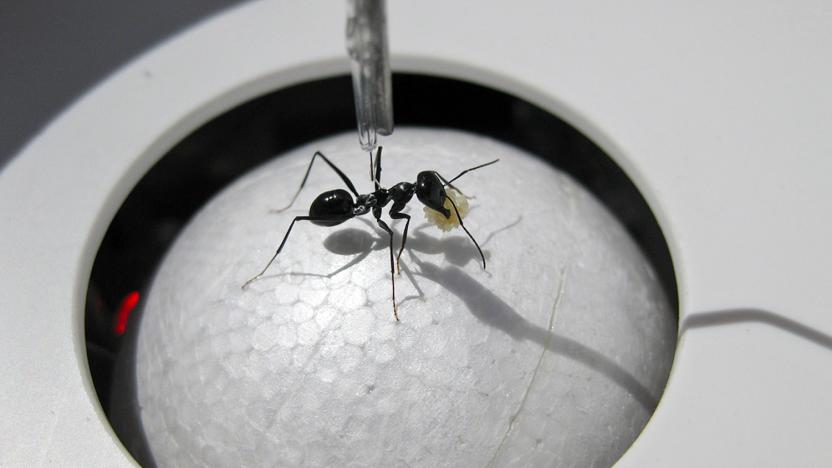
Ants run on tiny treadmills to help track their behavior
It's relatively easy to study animals' movement by plunking them on treadmills, but how do you do that with a creature as small and fragile as ants? Build a tiny custom treadmill, that's how. Scientists have crafted a contraption that let them study the homing behavior of ants on a treadmill for the first time. In many ways, it amounts to an optical mouse flipped on its back. An air-cushioned styrofoam ball serves as the actual running surface, giving the ant freedom to move as far as the tether (dental floss) allows without falling off; optical sensors from computer mice track their gait, speed and changes in direction.
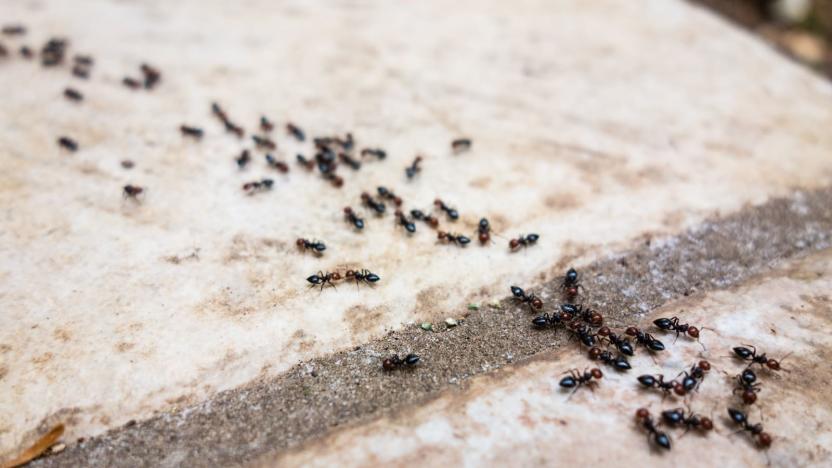
Gene-altered ants show how animal societies work
How much is societal behavior dictated by genetics? Scientists at Rockefeller University might just find out through ant colonies. They've modified the genes of clonal raider ants (not shown above) to see how the changes affect social behavior, both individually and on a grander scale. Knocking out genes for odorant receptors leads to "lone wolf" ants who wander by themselves for days, for example. The team keeps track of these exceptions by painting the ants in such a way that computers can track them all day, spotting even slight deviations from the norm.

Super-fast camera records light-based 'sonic booms'
Scientists have suspected that light can create its own conical wakes, like a sonic boom, but how do you capture something that happens so quickly? With a very fast camera, naturally. Washington University in St. Louis has recorded these photonic shockwaves using a "streak camera" that measures both the image and temporal data at 100 billion frames per second. To visualize the cones, the team shot very fast green laser pulses (just 7 picoseconds long) through a tunnel full of dry fog and placed between plates made from aluminum oxide and silicone rubber. Since the laser moved faster in the tunnel than in the plates, it produced a sonic boom-like effect as some of the light dragged behind.
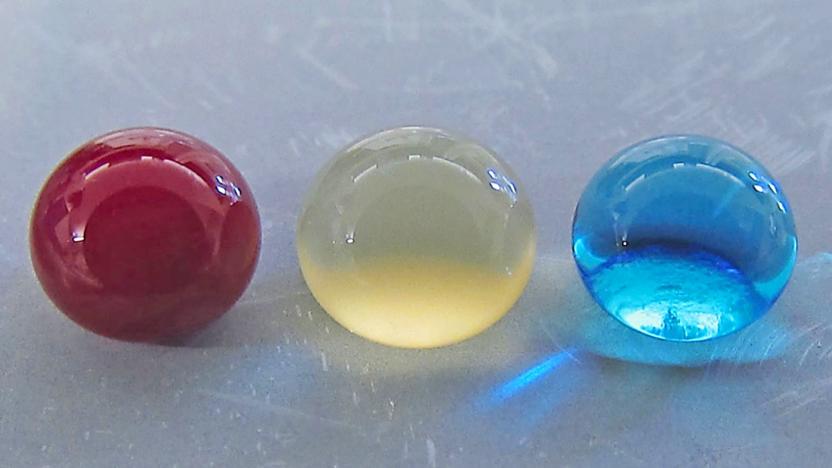
Blood-repellent metal could lead to safer implants
If you have to get an implant in the future, you may not have to worry quite so much about your body rejecting that life-enhancing technology. Colorado State University scientists have developed a titanium surface that's so blood-repellent that it fools your body into believing that there's no intruder at all. The team grew chemically modified layers that serve as barriers between the metal and organics, blocking any real contact. Fluorinated nanotubes were the most effective method of repelling blood in the experiments.
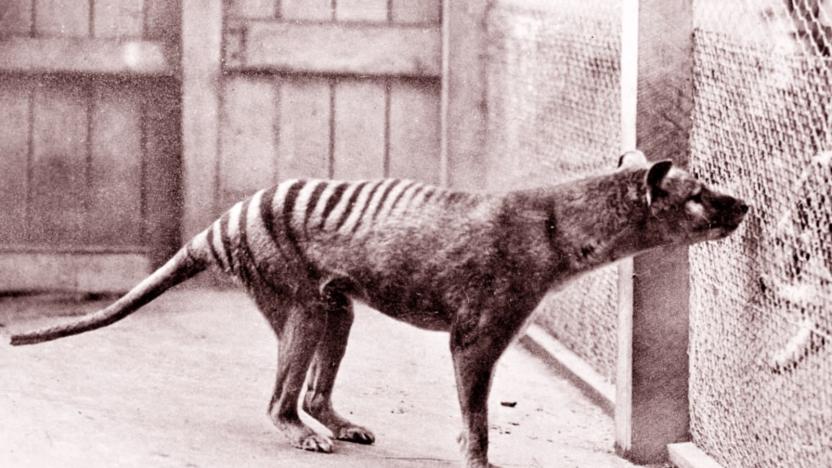
Brain scans shed light on an extinct species
It's not exactly easy to study the Tasmanian tiger. The marsupial has been extinct for over 80 years, and it wasn't given much scientific attention when it was alive -- settlers saw it as a threat to their livestock, not a curiosity. However, that isn't about to stop scientists from learning more about the sadly neglected species. Researchers have scanned two preserved Tasmanian tiger brains and discovered that the creatures were considerably more intelligent than many thought. While their brains were similar to those of Tasmanian devils, their larger frontal lobes suggest they were better at planning and making decisions. That backs the belief that they were hunters, not scavengers like their genetic cousins.

Scientists confirm a 'new' human organ
For centuries, the mesentery (which links the intestine to the abdomen) has been treated as a group of distinct structures in your digestive system. It wasn't anything special. However, the medical world now has to rethink that belief. Scientists recently determined that the mesentery is really one, cohesive entity -- that's right, they confirmed the existence of a 'new' organ. Researchers first discovered the continuous nature of the mesentery through microscopic examinations in 2012, but the past few years have shown that it has enough function to be considered an organ.

X-ray laser spots photosynthesis in real-life conditions
Humanity has known about the life-giving photosynthesis process for a long time, but studying it in real-world conditions has often been impractical. You've typically had to freeze samples to get a good look, which isn't exactly natural. However, the SLAC National Accelerator Laboratory just managed a breakthrough: it used its x-ray laser to capture detailed snapshots of photosynthesis at room temperature. The trick was to place protein complex samples in a solution, put that on a conveyor belt, light it up with a green laser (to start the water-splitting reaction) and capture images using x-ray pulses. As those pulses are extremely fast -- just 40 femtoseconds long -- you can collect crystallization and spectroscopy data before the sample meets its untimely end.

Google machine learning can protect endangered sea cows
It's one thing to track endangered animals on land, but it's another to follow them when they're in the water. How do you spot individual critters when all you have are large-scale aerial photos? Google might just help. Queensland University researchers have used Google's TensorFlow machine learning to create a detector that automatically spots sea cows in ocean images. Instead of making people spend ages coming through tens of thousands of photos, the team just has to feed photos through an image recognition system that knows to look for the cows' telltale body shapes.

Humans can only live to 115, researchers claim
Research out of New York's Albert Einstein College of Medicine believes that the goal of living forever is an impossible one. A team of researchers analyzed mortality rates and aging trends across the world and found that there may be a ceiling to our lifespan. Popular belief may be that humans could live longer if they remain in good health, it appears that the best we can hope for is 115 years on this planet. Which should give you just enough time to finish all of those TV series binges before the world inevitably boils into dust.
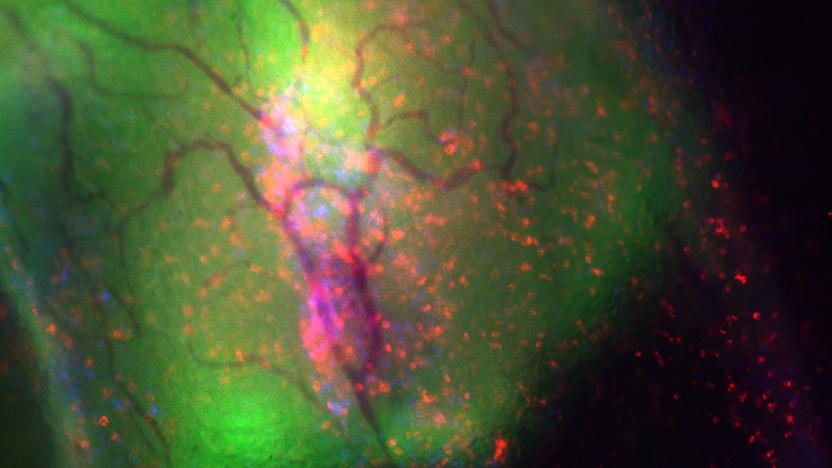
Scientists watch an immune system fight the flu in real time
To date, biologists have typically had to study the progress of a virus through indirect means, such as studying the antibodies -- actually tracking the viruses themselves has been difficult. However, researchers say they've found a way to follow the progress of a virus in real time. By using multiphoton microscopy in tandem with a laser and fluorescence, the team monitored influenza virus in a mouse's trachea (where the transluency made imaging possible) through the infection and immune system response.

Gamers beat scientists to making a protein discovery
It's no great shock to see citizen scientists make discoveries that professionals miss, but making it through a video game? That's different. Gamers playing Foldit, a puzzle title that has teams trying to fold the best protein, have identified the shape of a protein before scientists (including two trained experts and 61 University of Michigan undergrads) could manage the feat. And it's not as if there were legions of contributors, either, as it took a relatively modest 469 players to help out.
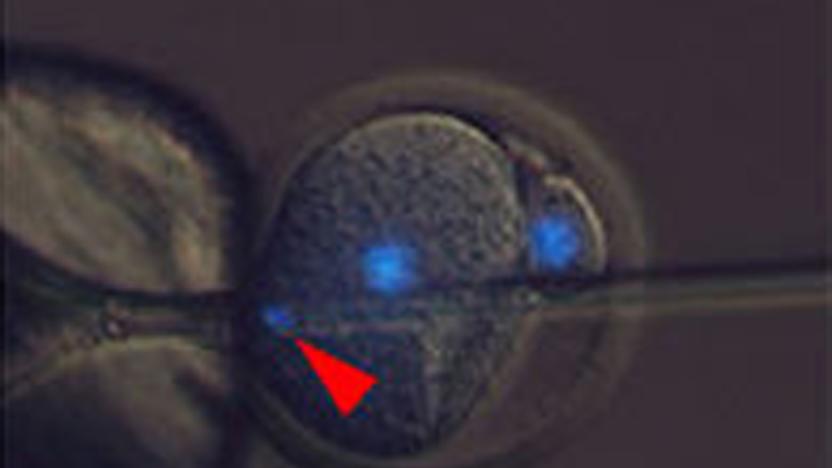
Researchers produce healthy mice without using fertilized eggs
A mammal needs fertilized egg cells to have children, right? Not so fast. University of Bath scientists report that they're the first to successfully breed healthy mice without any fertilized eggs, instead relying on inactive embryos. The team first doused eggs in strontium chloride, which prevents them from going into a state of arrest while they're turned into embryos -- previous attempts to fool the eggs saw them die within a few days. Researchers then inserted sperm nuclei that reprogrammed the embryos, readying them for the wombs of their surrogate mothers.
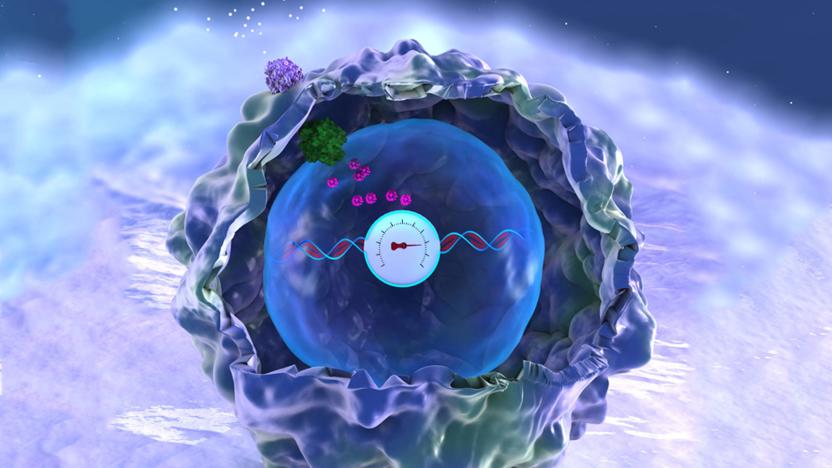
Gene editing records 'memories' in human DNA
Scientists have been recording data in DNA for a while, but it has usually involved bacteria and other simple organisms. MIT, however, just took a big leap forward. Its researchers have used the CRISPR gene editing technique to record histories in human cell DNA for the first time. They've crafted a gene circuit that only expresses an enzyme when it's near a key immune cell molecule, building up mutations the more it's exposed to that molecule. All you have to do to extract "memories" is to sequence those genes. They'll tell you whether or not there was a lot of inflammation, for instance.
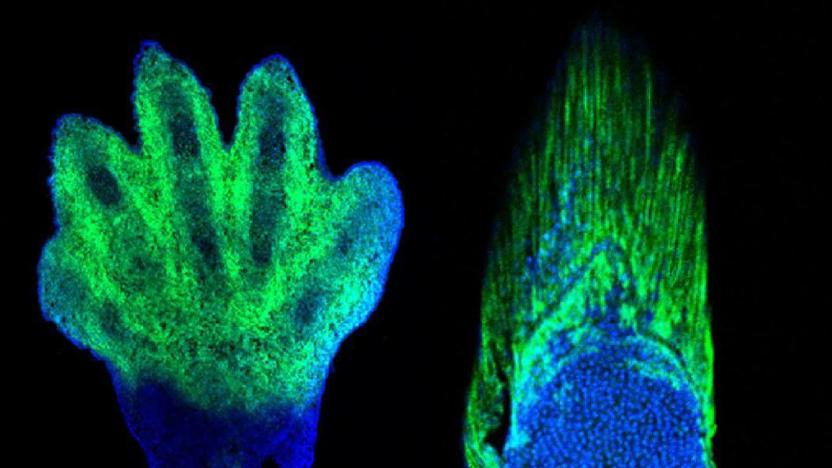
Gene editing helps spot evolutionary link between fins and hands
Gene editing technology isn't just useful for curing the world's ills, it seems. University of Chicago scientists have used the CRISPR technique to discover a key evolutionary connection between fins and hands. Researchers edited fin-related zebrafish genes to make the appropriate cells glow as they develop, and discovered that there's a similar glow in a mouse's digits. In other words, there's a strong similarity in the genes governing fins and digits -- they're both telling embryonic cells to show up at the end of an appendage.
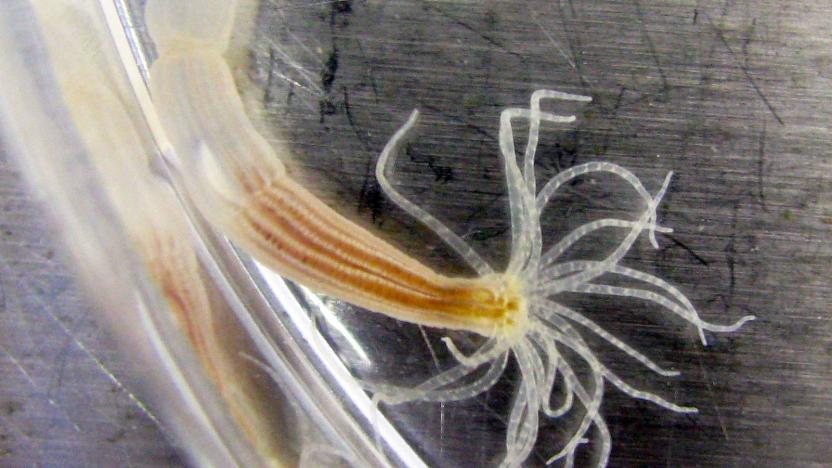
Sea anemones could be the key to treating hearing loss
Sea anemones could soon do a lot to help those of us living above the water. Researchers have discovered that proteins used by starlet sea anemones to repair their cells also repair the sound-sensing cells in mice and other mammals. If you bathe cells in those proteins for long enough (the team tried for an hour), they rapidly restore molecular links that bundle hearing-related hair cells together. In theory, you could reverse hearing damage among cells that haven't been permanently lost -- that exceptionally loud concert might not permanently limit your listening enjoyment.

Dolly the sheep's clones are healthy, thank you
When Dolly the cloned sheep fell victim to premature aging, lung disease and osteoarthritis, that triggered many fears. Is cloning safe? Would her fellow clones also meet an early end? Apparently, you can relax. A University of Nottingham study shows that four of Dolly's genomic clones (Daisy, Debbie, Denise and Dianna) are healthy, with no conditions that suggest they're aging too quickly. Some showed early signs of osteoarthritis, but that's normal for their advanced age. In short: cloning, if all goes well, is safe.

Scientists find a way to make cells respond to stimuli
Through the use of synthetic biology researchers have been able to program cells to perform unique functions, like produce drugs in response to disease markers. In order to create more complex cellular circuits, several MIT engineers have now found a way to program cells to respond to a series of events.

Artificial cell membranes could lead to more effective drugs
Medical science often targets drugs at the proteins in cell membranes. But how do you study everything about their behavior when you can't control them? That's what UC San Diego researchers aim to fix. They've developed artificial cell membranes that grow and model themselves just like those in mammal cells, making them ideal for testing how drugs will behave. The trick is to use reversible chemical reactions that remodel phospholipids (key molecules in the cell membrane) and make the cell 'recycle' them, rather than generate them from scratch. That, in turn, saves the cell a lot of effort as its membrane grows.



